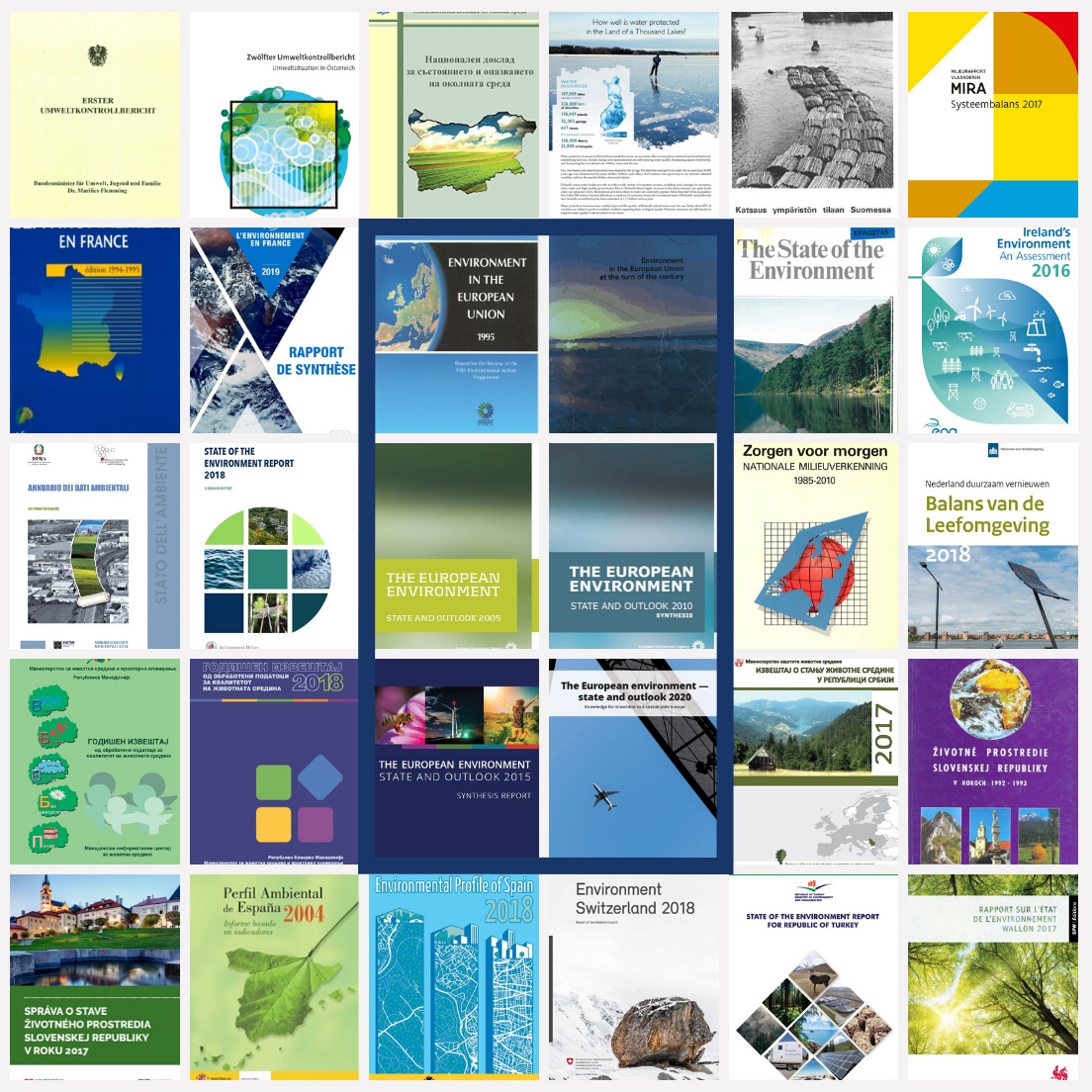For the European Environment Agency (EEA), this year’s publication of ‘The European environment – state and outlook (SOER) 2020 ’ marks 25 years of SoE reporting and contribution to EU environmental policy. For the occasion, the EEA, together with its 39 member and cooperating countries (referred to as Eionet countries), has co-created a specific infographic representing key EU, EEA and UN milestones that impacted the development of SOER 2020, as well as improvements in the content, methodology and outlook for future developments of SoE reporting.
Inspired by - and following the same logic of this overarching infographic - 26 Eionet countries prepared their own infographics, tailored to their national SoE reporting advances. Taken together, these infographics provide a comprehensive overview of the history and development of environment reporting in Europe, and underline their diverse features.

Development of State of Environment reporting over time
In Europe, SoE reporting has developed rapidly over the years, accelerated by several important milestones. Most notably, the ‘United Nations Conference on the Human Environment in Stockholm’ (i.e. the Stockholm Conference) in 1972 triggered the publication of the very first SoE report in Finland, paving the way for other European countries. The 1998 ‘UNECE Aarhus Convention on Access to Information’ and the 2003 ‘EU Directive on Public Access to Environmental Information’ provided the incentive to anchor SoE reporting in European and national legislation, making it central to future environmental policy-making.
As a result, the number of national SoE reports increased exponentially, with 30 Eionet countries planning to publish new editions in 2019/20.
Diversity of State of Environment reporting
The practices of SoE reporting gradually expanded in terms of the environmental themes covered. The EEA SOER series is a case in point: from initial coverage of air, water and land, its current scope broadened to include biodiversity, noise and the circular economy. A sectoral approach was introduced to allow a proper understanding of environmental issues, while, since 2010, the consideration of global megatrends provides a broader perspective and outlook for Europe’s environment. The most recent SOER reports include systems thinking, as well as (long-term) sustainability transition approaches.
National SoE reporting practices share a similar development trajectory. Some countries prefer to take environmental themes as an entry point (for example, Malta, Montenegro and Poland), others (such as Croatia and Slovakia) embrace both themes and sectors, and the most recent SoE reports from Austria, Belgium (Flanders region), the Netherlands, France and Switzerland include systems thinking and sustainability transitions in their assessments.
The typology of SoE reports is another distinct trait. Broadly, reports can be categorised as indicator-based or integrated environmental assessments. Indicator-based reports capture the interplay between the environment and socio-economic activities through indicators that describe the state, trends and prospects of developments, generally applying the DPSIR (Driving forces, Pressures, States, Impacts, Responses) assessment framework. Examples include Belgium (Walloon region), Denmark, Estonia and Norway, whose online indicator-based SoE reports are continuously updated, or Spain, Bulgaria and Turkey, who update their reports on a (multi) annual basis. Integrated environmental assessments discuss and analyse environmental themes, policies and related challenges, while adopting systems thinking and sustainability transition approaches. Examples include Austria, Belgium (Flanders region), Finland, France, Ireland and Italy, as well as the EEA’s own SOER 2020 report.
To supplement both types of SoE report and foster sound policy-making, the EEA and Eionet countries frequently publish monitoring data, additional relevant facts and figures (socio-economic and environmental) and scoreboards showing environmental trends and policy progress. These data are increasingly available as open source (in line with the EU’s Digital Agenda), promoting their use by all stakeholders and thereby ensuring maximum uptake and diffusion.
Future advances in State of Environment reporting
The challenge for the new generation of SoE reports is to provide effective indicators, with a robust evidence base that incorporates new data sources like Copernicus’ remote sensing data and environmental DNA. Such an indicator framework should facilitate public communication and participation and be relevant to current (environmental) and emerging themes, such as circular economy and (micro) plastics. It should also encompass integrative concepts, such as the Sustainable Development Goals (SDGs) and long-term systemic challenges. The latter requires a shift in SoE reporting towards an integrated sustainability assessment approach that includes new knowledge on sustainability transition pathways and sustainability transition monitoring, as well as identifying levers, such as multi-stakeholder and participatory approaches, to translate knowledge into action. These changes should continue to foster and safeguard an effective connection to national decision makers.

Document Actions
Share with others